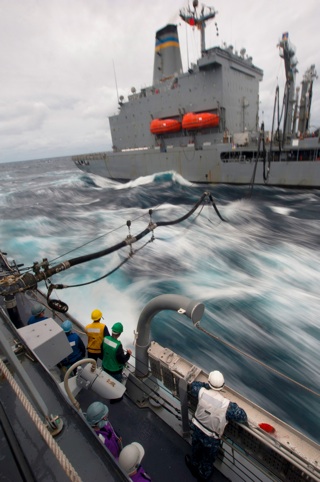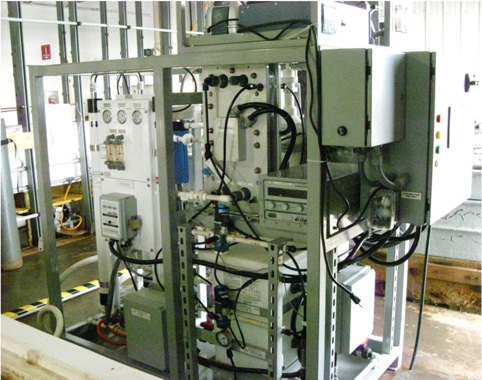Researchers at the Naval Research Laboratory (NRL) in Washington, DC, have demonstrated that it is possible to obtain CO2 and hydrogen from seawater, then convert these to hydrocarbons suitable for fuelling aircraft.
Keeping ships and aircraft fuelled is a major operation for any navy. The US Navy has 15 refuelling ships — known as oilers — and last year these delivered 600 million gallons of fuel to ships under way. Generating their own fuel would free up the ships from these logistics and make the navy less dependent on imported oil, said Nancy Willauer, a research chemist who worked on the project.

The technology uses electrochemistry to recover CO2 from seawater, where it is present at a concentration 140 times greater than in air, mostly as bicarbonate with traces of carbonate and dissolved CO2 gas (carbonic acid). The navy team developed a device called an electrochemical acidification cell, which uses ion-permeable polymer membranes and an electric current to lower the pH of the seawater. The three forms of carbon in the water exist in a state of equilibrium, and making the water more acidic alters the balance between them, making gaseous CO2 the most stable form. The cell produces hydrogen gas at its cathode as a by-product.
After demonstrating this at a small scale, the NRL team scaled it up to a skid process — a freestanding unit on a scale similar to that which might be used in the field — which can reportedly recover up to 92 per cent of the CO2 from seawater taken from the Gulf of Mexico.

Converting these two gases into hydrocarbons uses a technology similar to the Fischer-Tropsch process, which has been used for many years to make fuel from ‘synthesis gas’, a mixture of hydrogen and carbon monoxide. ‘By modifying the surface compositions of iron catalysts in fixed-bed reactors, NRL has successfully improved CO2 conversion efficiencies by up to 60 per cent,’ Willauer said.
The iron-catalysed process produces short-chain unsaturated hydrocarbons, which can then be combined to make compounds containing nine to 16 carbon atoms; treating these with a catalyst supported on porous nickel converts them into a liquid suitable as jet fuel, the researchers said.
NRL is now looking into improving the efficiency of the process and scaling it up and believes that the final process should be able to produce fuel at a price of between $3 and $6 per gallon (between fifty pence and £1 per litre). The process could be powered using nuclear electricity or by a method known as solar OTEC, which uses the natural temperature gradient between different levels of the ocean to power electricity generation, the team suggested. The research can be read in this paper.




AI-generated medical responses need monitoring, study finds
This would negate most of the benefit of using AI in the first place, rather like the Locomotive Act 1865 that required any self-propelled road...